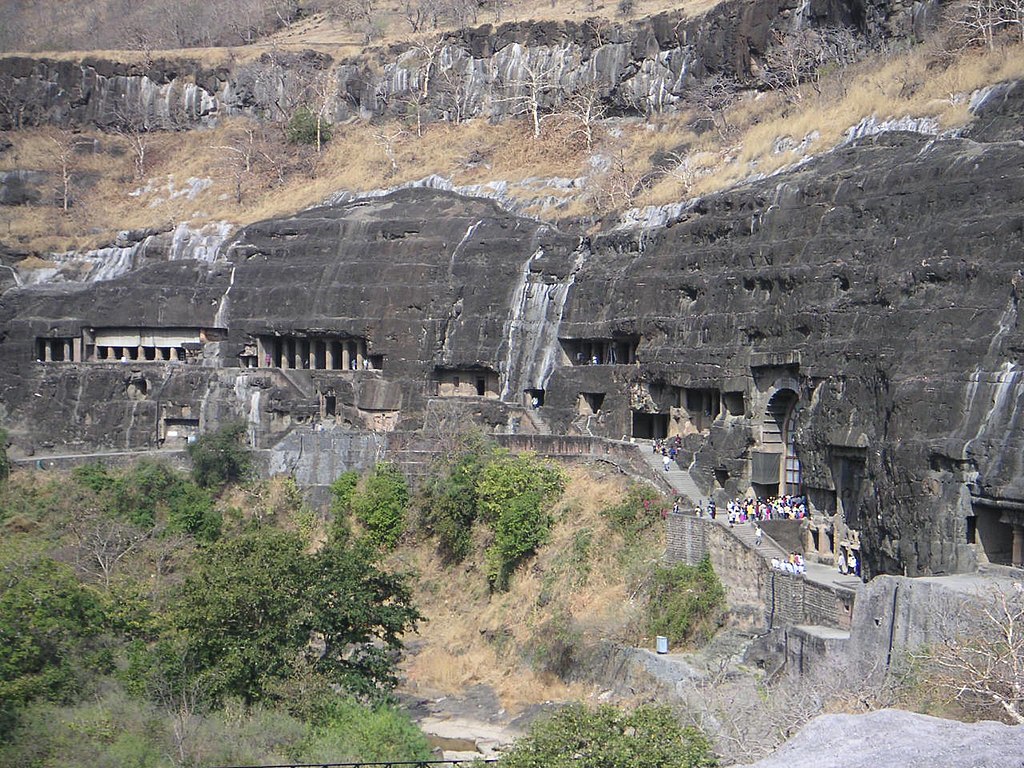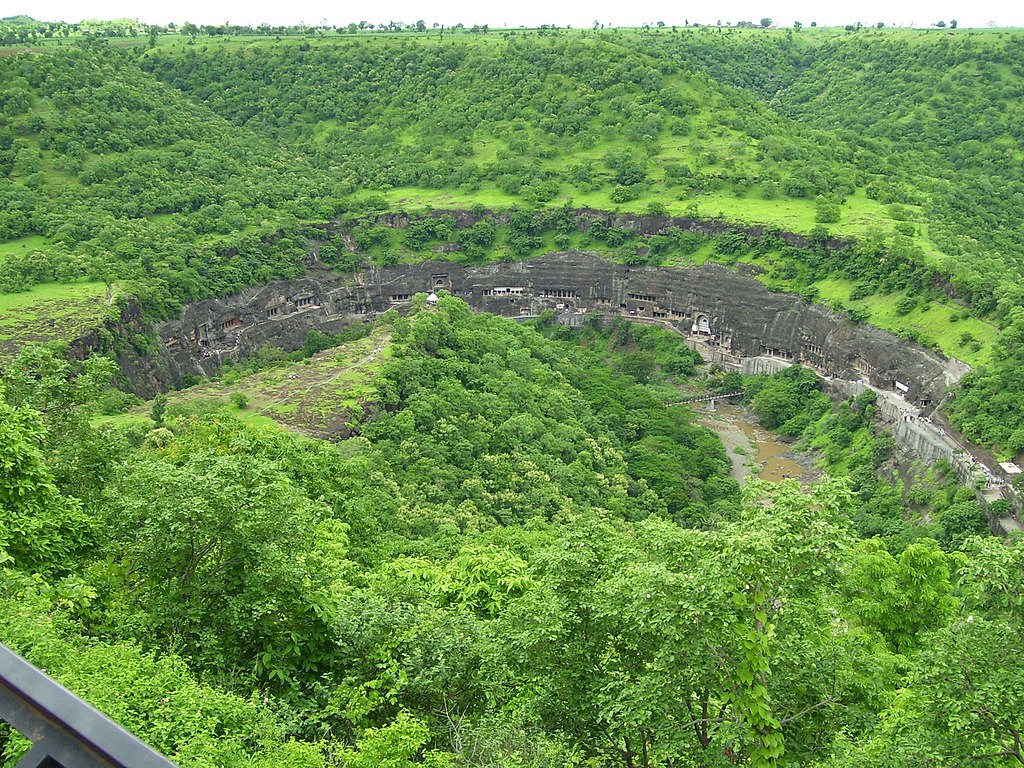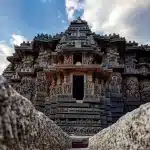Ajanta Caves are like a mind-blowing collection of 30 rock-cut Buddhist caves in Aurangabad, Maharashtra, dating back from around the second century BCE to 480 CE.
Construction of Ajanta Caves
So, the Ajanta Caves were made in two phases—first between the second and first centuries BCE and CE, and then again a few centuries later.
There are actually 36 different foundations in the caves, but some of them were only discovered after they started numbering the caves 1 to 29.
Later, they added letters to the caves that were found later, like 15A, which sits between caves 15 and 16. The whole numbering thing is just for convenience, though—it doesn’t show the actual order in which they were built.
Ajanta Caves recognized by UNESCO
These caves are a big deal, man – they’re even a UNESCO World Heritage site! People say they’re some of the best examples of ancient Indian art, with crazy good paintings and sculptures.
The artwork is next level, especially with how the artists used gestures, positions, and shapes to show all kinds of emotions. It’s like looking at ancient vibes through art!
The Ajanta Caves are like these super old monasteries (Viharas) and prayer halls (Chaityas) from different Buddhist traditions, all carved into a massive 75-meter rock wall.
ALSO READ : Hoysala Temple Architecture
Inside, you’ll find murals showing the Buddha’s past lives and rebirths, stories from Aryasura’s Jatakamala, and rock-cut sculptures of Buddhist gods.
According to old texts, these caves were used by monks as a chill spot during the monsoon. And also served as a pitstop for traders and pilgrims back in the day.
While vibrant murals were pretty common in Indian art, Ajanta Caves 1, 2, 16, and 17 have the largest collection of surviving ancient Indian wall paintings—like real gems from the past!
Relation of Buddhist
The Ajanta Caves have been mentioned in the diaries of some old-school Chinese Buddhist travellers from medieval times.
They were totally hidden in the jungle until 1819, when Captain John Smith. A British officer out on a tiger hunt, “discovered” them and made the world take notice.
These caves are made away in the rocky northern wall in a U-shaped valley. Which is near the Waghur River on the Deccan plateau. When the river’s flowing high, you can even hear the waterfalls from outside the caves.
The Ajanta Caves are rock-cut Buddhist temple caves located at the edge of the Indyadhri range, near the Waghora River.
A UNESCO World Heritage site, these caves attract millions of visitors every year. Ddrawn by their peaceful vibe, incredible Buddhist art, and stunning rock-cut architecture.

These 30 caves are just a few of the many Buddhist temples spread across Maharashtra’s Sahayadri or Western Ghats. But Ajanta’s the real gem when it comes to art. The oldest Buddhist narrative paintings in India can be found in Caves 9 and 10. Truly a must-see for anyone into ancient art!




